
© Paul Kolnik. (Click image for larger version)
New York City Ballet
American Rhapsody, The Four Temperaments, The Times Are Racing
★★★✰✰
Washington, Kennedy Center Opera House
9 June 2017
www.nycballet.com
www.kennedy-center.org
To watch works created by the 29-year old Justin Peck, resident choreographer of New York City Ballet, is to experience what it feels like to be young. Peck has a special gift to relate in movement the energy and vibe, the feelings and aspirations of the young generation. From his first breakout success, Year of the Rabbit (2012), to his more recent pieces, especially his highly-acclaimed Rodeo: Four Dance Episodes, his ballets – dynamic, uplifting, and often empowering in their mood and purpose – percolate with irresistible youthful vigor, replete with inventive and bold ideas. Peck conjures that vibrant, fast-paced world in which the dancers look inspired, uninhibited, and downright happy; and their joy is palpable and infectious. The audience soaks in their collective sense of bliss.
In his new ballet, The Times are Racing (premiered in January in New York as part of NYCB’s “New Combinations” program), Peck takes that level of youthful power to a new high. Accompanied by the relentless stream of techno sound, and featuring dancers dressed in chic urban clothing (T-shirts, denim shorts, brightly colored raincoats), the ballet – a riot of sound, color and movement – looks like a dance-anthem for the millennial generation. It’s also a call for action, with the themes of protest permeating the choreography from start to finish. This was the closing ballet of the second mixed repertory program NYCB performed at the Kennedy Center Opera House last week.
The ballet’s accompaniment – four tracks from Dan Deacon’s electronic album “America” – gives The Times its fervent attitude and racing pulse. With allusions to Steve Reich and Phillip Glass, the music itself captures that feeling of freedom, of moving forward, of being young that Peck extrapolates further in his invigorating, even explosive, steps.

© Paul Kolnik. (Click image for larger version)
The choreography is a mighty mix of styles, including ballet, hip-hop, tap, street and break-dance. The cast wears white sneakers instead of soft or pointe shoes, looking fabulous in the colorful and stylish garb designed by Humberto Leon of Opening Ceremony.
In the ballet’s opening scene the dancers form a communal cluster that expands and contracts as the music slowly but steadily builds dramatic momentum. When the sound hits a climatic ceiling, the dancers break their circle, dispersing around the stage like a burst of fireworks on the Fourth of July. Structure and chaos collide; energy and optimism rule. In this piece, the group geometry – a hallmark of Peck’s work – looks less elaborate and evolved than in his previous creations, yet the ensembles, spontaneous and refreshing, perfectly translate the spirit of the moment as well as the sense of support and connection among dancers.
From this vibrant crowd, Peck zooms in on four individuals. There is a fascinating tap twosome, which was danced with skill, zest, and a wonderful sense of rhythm by Taylor Stanley and Peck himself, who stepped in for the injured Ashly Isaac. (This role, from the ballet’s inception, was conceived as gender-neutral.) In this Times, there is also a place for urban romance; and the superb Tiler Peck, looking gorgeously alluring in her sporty outfit, and Daniel Applebaum danced their heart out in an exhilarating duet that looked more like a hip-hop face off than a date.

© Paul Kolnik. (Click image for larger version)
The program opened with Christopher Wheeldon’s American Rhapsody, from 2016, set to George Gershwin’s epochal “Rhapsody in Blue.” The ballet comes across as a balletic postscript to “An American in Paris,” the 2015 Broadway musical production which Wheeldon choreographed and directed. Just like The Times are Racing, it utilizes a group of 20 dancers, divided into two leading couples and a corps de ballet.
With his keen eye for architectural details, Wheeldon saturated this ballet with large ensembles, each full of intricacy and Broadway panache, with the dancers forming and dissolving a myriad of complex patterns or becoming part of human scaffoldings, each one more visually striking than the one before. But for all its flamboyance and visual wonder, the choreography almost universally felt parade-like – rigorous, sterile and impersonal – never really igniting an emotional spark. The leads – Lauren Lovette, Russell Janzen, Unity Phelan and Taylor Stanley – looked wonderful, dancing with appealing vibe and virtuosity, but they, too, could hardly breathe life into their constricted and romantically anemic duets.

© Paul Kolnik. (Click image for larger version)
George Balanchine’s seminal The Four Temperaments was the program’s centerpiece. A marvel of choreographic invention, this “black-and-white” abstraction, from 1946, is one of Balanchine’s most sophisticated and ingenious distillations of classical ballet to its absolute and purest form. With no extra frills, devoid of any décor and simple practice-like attire, this ballet demonstrates how music and movement alone can express meaning and beauty and evoke emotions.
NYCB’s dancers own this piece; and it’s always a thrill to see them in action. The supple Gonzalo Garcia gave his solo in the Melancholic variation an extra dose of grave desperation, eloquently emphasizing the downward pressure of the movements. Sara Mearns and Jared Angle delivered one of the most agile and powerful renditions of the Sanguinic variation in memory. As Phlegmatic, Ask la Cour exhibited exemplary technical control and poise; and the magnificent Teresa Reichlen was a goddess-like, imposing Choleric, leading the entire cast in the ballet’s sweeping, triumphant finale.
New York City Ballet Orchestra, under the baton of its music director Andrew Litton, gave a potent account of Paul Hindemith’s score. Stephen Gosling was an exceptional pianist.









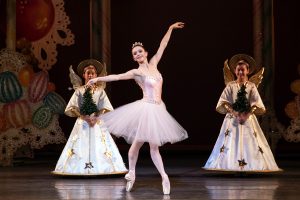
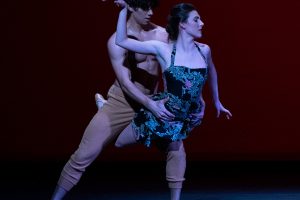
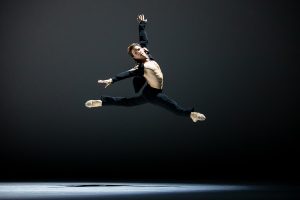
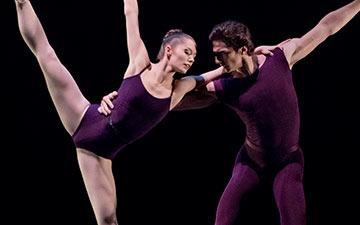


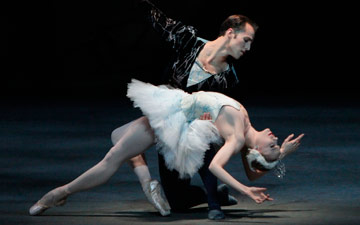

You must be logged in to post a comment.